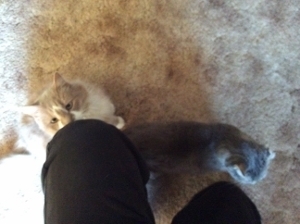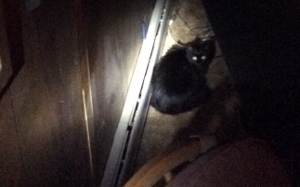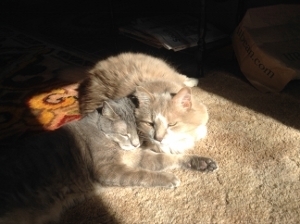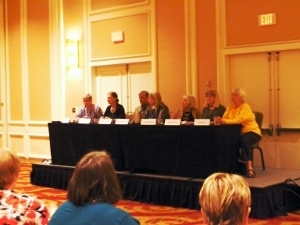Lea Wait's Blog, page 321
May 16, 2014
Weekend Update: May 17-18, 2014
 Next week at Maine Crime Writers there will be posts by Susan Vaughan (Tuesday), Jim Hayman (Wednesday), Barb Ross (Thursday), and Al Lamanda (Friday), with a special guest blog on Monday from Jenny Milchman, who just won the Mary Higgins Clark award for Cover of Snow.
Next week at Maine Crime Writers there will be posts by Susan Vaughan (Tuesday), Jim Hayman (Wednesday), Barb Ross (Thursday), and Al Lamanda (Friday), with a special guest blog on Monday from Jenny Milchman, who just won the Mary Higgins Clark award for Cover of Snow.
In the news department, here’s what’s happening with some of us who blog regularly at Maine Crime Writers:
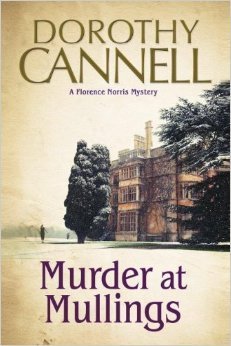 Dorothy Cannell’s Murder at Mullings, first in a new series, is now available in both print and ebook formats. It has lots to appeal to both mystery fans and those who love an English country house setting. Missing Downton Abbey? Florence Norris is housekeeper at Mullings, where “nothing ever happens” . . . until someone is murdered. There’s an “ornamental hermit” in the story, too. Dorothy gives Margaret Maron’s husband Joe credit for his inclusion.
Dorothy Cannell’s Murder at Mullings, first in a new series, is now available in both print and ebook formats. It has lots to appeal to both mystery fans and those who love an English country house setting. Missing Downton Abbey? Florence Norris is housekeeper at Mullings, where “nothing ever happens” . . . until someone is murdered. There’s an “ornamental hermit” in the story, too. Dorothy gives Margaret Maron’s husband Joe credit for his inclusion.
Monday night, May 19, at 6:30, Lea Wait will be speaking about “Editing: Good Writing is Re-Writing” at the Conway Public Library in Conway, New Hampshire. Her talk will be open to the public, refreshments will be served, and copies of her books will be available for purchase and signing. Lea will also be speaking on Wednesday, May 21; this time to a book group at the Cascade Brook School in Farmington, Maine, about her Uncertain Glory.
An invitation to readers of this blog: Do you have news relating to Maine, Crime, or Writing? We’d love to hear from you. Just comment below to share
And a reminder: If your library, school, or organization is looking for a speaker, we are often available to talk about the writing process, research, where we get our ideas, and other mysteries of the business. Contact Kate Flora: kateflora@gmail.com
Edgar Allan Poe Explains it All
Early on, I admired the work of Edgar Allan Poe, thanks mostly to my mother who read out loud to me his very creepy short story The Gold Bug. It was about a man obsessed with

searching for treasure after being bitten by an insect thought to be made of pure gold. The bug was described as a “scarab,” and I remember that detail adding an extra level of spine-tingling fear, because my mother was fond of wearing a colorful bracelet decorated with oval stones, also called scarabs.
Vicki Doudera here. Those early bedtime readings of Poe planted a deliciously sinister seed. Later I would read his short mystery Murders at the Rue Morgue and haunting poem, The Raven, and marvel at the way the man mixed literary horror and suspense. Truly Poe’s impact on literature, and on crime fiction specifically, cannot be overstated.
Given my history, you can imagine my delight at finding that Mr. Poe holds pride of place in a slim volume I’m reading called Great Writers on the Art of Fiction. His chapter, the first in the book, is an essay in which he makes the case that good writing is not the result of “ecstatic intuition,” but deliberate and careful consideration. Through painstaking analysis, Poe offers what he terms a “peep behind the scenes” at how he came to write The Raven.
Some of you may have read John Curran’s book about Agatha Christie’s diaries and the secrets of her writing process revealed within the scribbled pages. While Poe’s chapter is much more polished than those entries, and is, in fact, a well-constructed essay, it gives those of who write the same kind of insight as Christie’s journals. There’s a wonderful kinship gleaned from realizing that the greats who came before us struggled with the same literary decisions. They, too, had to scrap passages that didn’t work, change language that didn’t flow, and make the tough editorial choices all scribes must make. Just like me, they sat in front of a blank page and asked themselves, “Now what?”

For example, here are some of Poe’s concerns while writing The Raven:
1) Length, or what Poe calls the “extent” of the poem. He discusses just how long a reader will sit and read a poem, and makes a critical first decision: his work will consist of 100 lines. “It is, in fact, a hundred and eight,” he says, with perhaps just a touch of smugness.
2. Impression, or effect to be conveyed. Poe says he wanted to create a work that would be “universally appreciable,” i.e., popular. “Now I designate beauty as the province of the poem,” he says, explaining that while truth and passion are also worthy topics, they are far better attainable in prose.
3. Tone. Having decided on beauty as his theme, Poe says that the highest manifestation of beauty is sadness – therefore his poem will have a melancholy tone.
4. Refrain. He decides that a single word will be repeated, and then, ponders what that word will be. He’s led to the “long ‘o” as the most sonorous vowel, in conjunction with ‘r’ as the most producible consonant.”
You see where this is going, right?
“In such a search it would have been absolutely impossible to overlook the word “Nevermore,” says Poe. “In fact, it was the very first which presented itself.”
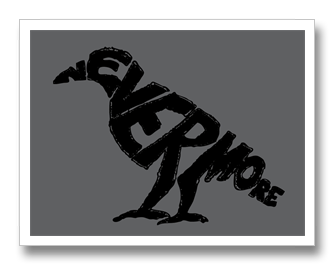
But who will speak the refrain? Poe imagines a “non-reasoning creature capable of speech,” and pictures a parrot. He then decides instead on the raven, as it, too, can speak, and is “infinitely more in keeping with the intended tone.”
Does anyone else eat this kind of literary explanation up? Poe goes on for several more pages describing in more detail the actual composition of the poem, and it’s fascinating stuff. Not because he’s a poet crediting some distant muse for his flashes of inspiration, but because he’s a craftsman explaining in great detail the many important decisions made navigating the artistic road.
For me, this chapter serves as a log for one of Edgar Allan Poe’s creative journeys. It took a bit of effort to read it, but when I finished I smiled and breathed a sigh of relief. Why? Because unlike the man searching for treasure in The Gold Bug, I’m not alone. I’ve got Poe and Christie by my side, and they are formidable allies.
Who are the “greats” whose writing process inspires you?
Edgar Allen Poe Explains it All
Early on, I admired the work of Edgar Allen Poe, thanks mostly to my mother who read out loud to me his very creepy short story The Gold Bug. It was about a man obsessed with
searching for treasure after being bitten by an insect thought to be made of pure gold. The bug was described as a “scarab,” and I remember that detail adding an extra level of spine-tingling fear, because my mother was fond of wearing a colorful bracelet decorated with oval stones, also called scarabs.
Vicki Doudera here. Those early bedtime readings of Poe planted a deliciously sinister seed. Later I would read his short mystery Murders at the Rue Morgue and haunting poem, The Raven, and marvel at the way the man mixed literary horror and suspense. Truly Poe’s impact on literature, and on crime fiction specifically, cannot be overstated.
Given my history, you can imagine my delight at finding that Mr. Poe holds pride of place in a slim volume I’m reading called Great Writers on the Art of Fiction. His chapter, the first in the book, is an essay in which he makes the case that good writing is not the result of “ecstatic intuition,” but deliberate and careful consideration. Through painstaking analysis, Poe offers what he terms a “peep behind the scenes” at how he came to write The Raven.
Some of you may have read John Curran’s book about Agatha Christie’s diaries and the secrets of her writing process revealed within the scribbled pages. While Poe’s chapter is much more polished than those entries, and is, in fact, a well-constructed essay, it gives those of who write the same kind of insight as Christie’s journals. There’s a wonderful kinship gleaned from realizing that the greats who came before us struggled with the same literary decisions. They, too, had to scrap passages that didn’t work, change language that didn’t flow, and make the tough editorial choices all scribes must make. Just like me, they sat in front of a blank page and asked themselves, “Now what?”
For example, here are some of Poe’s concerns while writing The Raven:
1) Length, or what Poe calls the “extent” of the poem. He discusses just how long a reader will sit and read a poem, and makes a critical first decision: his work will consist of 100 lines. “It is, in fact, a hundred and eight,” he says, with perhaps just a touch of smugness.
2. Impression, or effect to be conveyed. Poe says he wanted to create a work that would be “universally appreciable,” i.e., popular. “Now I designate beauty as the province of the poem,” he says, explaining that while truth and passion are also worthy topics, they are far better attainable in prose.
3. Tone. Having decided on beauty as his theme, Poe says that the highest manifestation of beauty is sadness – therefore his poem will have a melancholy tone.
4. Refrain. He decides that a single word will be repeated, and then, ponders what that word will be. He’s led to the “long ‘o” as the most sonorous vowel, in conjunction with ‘r’ as the most producible consonant.”
You see where this is going, right?
“In such a search it would have been absolutely impossible to overlook the word “Nevermore,” says Poe. “In fact, it was the very first which presented itself.”
But who will speak the refrain? Poe imagines a “non-reasoning creature capable of speech,” and pictures a parrot. He then decides instead on the raven, as it, too, can speak, and is “infinitely more in keeping with the intended tone.”
Does anyone else eat this kind of literary explanation up? Poe goes on for several more pages describing in more detail the actual composition of the poem, and it’s fascinating stuff. Not because he’s a poet crediting some distant muse for his flashes of inspiration, but because he’s a craftsman explaining in great detail the many important decisions made navigating the artistic road.
For me, this chapter serves as a log for one of Edgar Allen Poe’s creative journeys. It took a bit of effort to read it, but when I finished I smiled and breathed a sigh of relief. Why? Because unlike the man searching for treasure in The Gold Bug, I’m not alone. I’ve got Poe and Christie by my side, and they are formidable allies.
Who are the “greats” whose writing process inspires you?
May 15, 2014
When Teachers Aren’t Teaching
When I’m not writing or doing my cyber crime work, I work at conferences. This past week it was a teacher’s conference about reading. It’s always interesting to see teachers out of the element and “in the wild.” This is the third time I’ve worked this particular conference, which focuses on getting students to read more, literacy and common core standards.
Teachers attend many presentations in addition to the keynote sessions in the morning. This year, Jeff Kinney, who is author of the Diary of a Wimpy Kid series was keynote the first day. There were over 6,000 teachers we had to wrangle to keep in line before the doors to the auditorium were opened.
Most were pleasant and joked around with us as we directed them to the end of the line. But there are always those who think they are “special” and insist on waiting near the line, but not in it and think they will be able to sneak into the keynote ahead of the others. Not gonna happen on my watch. They get really angry when you don’t let them get away with it.
The regular sessions/presentations are another story. Ninety percent of the teachers are good and will follow directions. But when a session was full and we couldn’t put more into the room, that ten percent would get really upset and yell at us, specifically me. I wanted to tell them, “Well, you should have gotten here early to get a seat instead of waiting until five minutes prior if you knew the session was going to be popular,” but I can’t do that.
So, I would tell them it was out of my hands and I was here making sure the rooms met fire code standards, which means everyone has to either be seated or standing along the back wall. No sitting on the floor. And you want to guess how many sat on the floor?
I would go into the room 15 minutes after the start and would almost always find at least one teacher sitting on the floor. I would politely explain to them they couldn’t do that because of the fire codes and usually they would stand. I had one teacher who would gather her things in a huff, walk out of the room, then go to the next one and sit on the floor there.
When she did this the second time, I stood next to her until she got up and left, then followed her to the next room and waited until she was seated or standing along the wall. She kept giving me the evil eye.
I did get three teachers who made a point to stop me and compliment me on our work at keeping everything in order. It’s always nice to get those compliments especially when they are few and far between.
One thing I always come away from after this conference is that it is I who was the teacher and the teachers were my students. And some of them behaved very badly indeed.
May 14, 2014
Adventures in Cat-Sitting
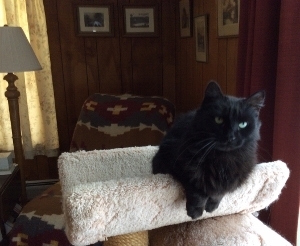 The one downside of going away for a few days is finding someone to look after our three cats while we’re gone. When I found out I was going to be the Guest of Honor at Malice Domestic 2014, I naturally chose my husband as my plus one, but that meant I spent almost an entire year fretting over the cat sitter problem. Our three babies are getting on in years, and they’re spoiled rotten, so putting them in a kennel was out of the question. For reasons I won’t get into, we didn’t want to impose on family this time around. Fortunately, our good friend Ed came to the rescue.
The one downside of going away for a few days is finding someone to look after our three cats while we’re gone. When I found out I was going to be the Guest of Honor at Malice Domestic 2014, I naturally chose my husband as my plus one, but that meant I spent almost an entire year fretting over the cat sitter problem. Our three babies are getting on in years, and they’re spoiled rotten, so putting them in a kennel was out of the question. For reasons I won’t get into, we didn’t want to impose on family this time around. Fortunately, our good friend Ed came to the rescue.
Well, okay, I did him a favor and then informed him this was what he’d have to do in return. I figured all would be well, especially after he and his wife came out to the house the weekend before we left and spent some quality time getting to know Bala, Nefret, and Feral. Bala really took to Ed, which was good, since she’s the one who has a potassium deficiency and he’d have to take over the pill-giving while we were away.
I should explain that Bala is good about taking her pills. I rattle the pill bottle. She hops up on the kitchen island. I open her mouth with one hand, poke in the pill with the other, then hold her mouth closed, gently rub her throat, and the pill goes down. Once in a while she spits it out and we have to repeat the process, but normally there’s no problem. You see, she knows there’s a reward coming, a handful of cat treats if she cooperates.
So, off we went to Malice.
Bala was waiting by the door when Ed arrived that first day. Unfortunately, by the time he put out fresh food and water, she’d disappeared into the cellar. After a first frantic phone call, the story resumed via email, with illustrations.
“See, I have two out of three.”
Two hours later, a second email arrived:
“So, old habits die hard. What do you do when the suspect eludes you? That’s right you call for backup. In this case it was in the form of my wife. We arrived at the scene and searched for the suspect.” They located Bala under the bed that Feral was sleeping on “thus causing me to think he was a lookout and in on the plot! As soon as the suspect was discovered, it fled the scene. It was later located behind the couch.”
“Now, we have two choices. Chase Bala down and give her the pill. Or let her win. Feeling it would only traumatize her and would not be what you would do, we let Bala win.”
Bala 2
Catsitter 0
The saga continued the next day:
“So we walked into the house. I said hi to Bala. I saw a black tail streak to the corner and poof . . . It was gone! Vanished! Does Bala do any other magic tricks?”
The next email contained a suggestion:
“I have two Have A Heart traps. Perhaps I could offer one of them to Bala to rest in? I will make another attempt to make contact with Bala this afternoon, but based on past attempts………………. Just curious, but is the medication for bi-polar, or manic depressive, or something like that? Enjoy your limelight. I’ll be savoring the fact that I can repeatedly lose a battle of wits to a cat.”
The final email from Ed, sent on the Sunday afternoon of Malice Domestic, read PROGRESS! on the subject line. However,
“I said progress not success, there is a difference ya know. Today we can be in the same room as Bala! I can toss her a treat without invoking a flight response. AND, as soon as the lock clicks, I can watch Bala walk across the room towards the food dishes in the kitchen. We are not sure there will be any canned food left. Feral, my B.F.F., ate one serving and started on the second one. Sure does have a good appetite for an old guy. Nefret didn’t budge but was breathing and looked quite comfortable.”
Needless to say, everyone was fine when we arrived home at around 2AM Monday morning. Bala took her pill without a bit of trouble (Sorry, Ed!) and as soon as I sat down I had the other two in my lap. I think they missed us, although it’s hard to be sure with cats. They spend most of their lives sleeping, so who knows what their concept of time is like? They are champions, though, at making their people feel guilty for leaving them alone for so long.
May 13, 2014
On Books and Brush
Hey all. Gerry Boyle here. Good to be back in Maine after some time away (a research trip to Ireland; fishing in Florida). And now that I’m home with the weather finally warming, I’ve been busy. This past weekend, I did some pruning, trimming, cleared a bunch of brush, weeding out all the stuff that collects after a long winter.
And yes, I did move some brush (see photo. Was this a long messy winter or what?). But I also spent a chunk of time weeding through the manuscript for my latest, ONCE BURNED, considering the editor’s suggested cuts (most were just fine), and making a few of my own. I even took a hard look at some sections of the book that I particularly liked.
The novel is first-person, which can limit the amount of time readers can spend inside the criminal’s head. So I wrote a preface, from the villain’s point of view. And then four additional POV passages interspersed with the narrative. And some good stuff in there, I thought. I like the way my criminals think. Here’s how one of the POV inserts begins, just a taste:
You learned a lot about a small town when you operated at night. Who was an alcoholic, drinking alone in a pickup in the woods. Who was selling drugs, deals going down on back roads. Who was a thief, busting in through back doors, coming out with a bag full of jewelry and pills, like Santa Claus but backwards. Who was screwing around, car pulled into the bushes, windows steamed up, moaning and groaning and grunting. And then the next day the two of them sitting tall with their families—and spouses— in church.
People were mostly hypocrites, the public face hiding the dirtbag underneath.
I don’t know about you but I like that bit. Unfortunately, like some of the writing I liked most in this one, it ended up on the cutting-room floor. This, I’ve learned, is a crucial part of the writing process, and it doesn’t involve actual writing—putting words on the page—at all. It involves taking them off. So the inserts got uninserted. I saved them for another time but maybe that’s just a way of easing the pain of the surgery.
The lesson for me, and it’s one I have to relearn with each book, is that the writing can’t get in the way of the story. And the part of the writing that you like best is what will lead you astray. For me, that habit is dialogue. Characters get talking and before you know it they’re chatting away, having a good old time—but not one that necessarily adds to the tension or moves the story. A good editor won’t be fooled. And the red pen comes out. “But I love that line,” you say. Alas, good lines on their own do not a novel make.
So that’s my story for today. The brush pile is getting bigger. But the novel, I know, is getting better and better.
May 12, 2014
The Time of Her Life
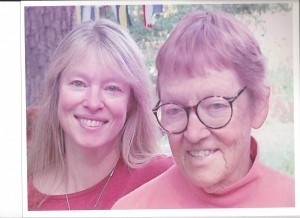 Yesterday was Mother’s Day. For years, I’ve been trying to write a mother’s day column that’s a story about my mother, A. Carman Clark. She’s been gone for seven years, and I’ve been a writer for more than thirty. I still can’t tell this story well enough to make you feel it, but today I’m going to try.
Yesterday was Mother’s Day. For years, I’ve been trying to write a mother’s day column that’s a story about my mother, A. Carman Clark. She’s been gone for seven years, and I’ve been a writer for more than thirty. I still can’t tell this story well enough to make you feel it, but today I’m going to try.
In her sixties, my mother had an epiphany: she had lived her life as her parents’ daughter, trying to please them and meet their expectations; she had lived her live as a wife and mother, giving her time and energy to her family. Now, with perhaps a quarter of her life left, she decide she wanted to devote that time to living her life for herself. What were her dreams and desires? What were her needs? What did she want to do before the clock ran out?
That wondering process quickly led to another epiphany—that her years with a toxic family and a relentlessly critical husband had instilled in her such a habit of self-criticism and the certainty that she couldn’t do anything right that she was unable to feel entitled to act on her own behalf. She would need to start with some therapy to exorcise those demons of self-doubt before she could reclaim her life.
The result of her self-exploration was a memoir entitled Fourth Quarter Dividends.
She never sold the book, but a neighbor in Union, Judith Daniels, convinced her to allow a portion of that memoir to be published in Self Magazine as an article, “The Time of Her Life.”
That article appeared in an issue about the different stages of a woman’s life, and the editors at Self
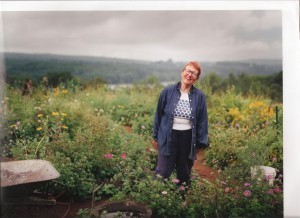
A. Carman Clark in her garden
entered it in the magazine category of a national competition called Books for a Better Life. It became one of the five finalists.
So one day I got a call from my mother. “I’ve been nominated for a national award,” she said. “And my publisher wants me to go to New York for the awards ceremony. Do you think I should go?”
I told she should go if she wanted to. After I hung up, I realized what her real question was: How as she, an elderly woman, blind in one eye, and living on a farm in rural Maine, going to negotiate that trip to New York? I called her back, told her that if she wanted to go, I would pick her up and take her to New York. She did, and I did.
We took the train to Manhattan. A cab to the magazine headquarters, then walked around the corner to our hotel. She wanted to stroll down the street to the New York Public Library to visit the lions, Patience and Fortitude, that she had liked to visit as a young working woman.
Later we got all gussied up and walked down the street to an opening cocktail reception and then into the small theater where the Academy Award style ceremony was held. We sat in the dark in a row of chairs—my mother, her editor, the senior editor, her publisher, and me, while book covers were flashed on a bank of screens over the stage, celebrities chattered and handed out awards, and one-by-one, the envelopes were opened and the winners announced.
Then came the moment—the magazine article category. The five covers, the five articles, and the five author’s names appeared on the giant screens. The envelope was ripped open, and the announcer read: A. Carman Clark for The Time of Her Life.
Mom made a small sound. Her editor grabbed my arm and babbled, “I never thought . . . I didn’t tell her to prepare . . .will she???”
“Don’t worry,” I said. “She’ll be just fine.”
Balancing on her walking stick, my little country mouse mother made her way to the stage, climbed the stairs, and stood behind the podium. It was so tall she couldn’t see over it, so she peeked around the side. “I wondered whether it would be worth it to come down here from my farm in Maine,” she said. “And now I see that it was.”
Her editor started breathing again. The audience cheered. And my almost eighty-year-old mother received a Lucite plaque that was an open book with her name and her article inscribed. After a life with very little recognition, she was an award-winning writer on the national stage.
We went to dinner at the Harvard Club. I don’t think she ate. I think she simply sat and admired her plaque. I think she just basked in happiness.
Later, we went back to our hotel room, where, after some prodding, she called some friends and family to report the honor.
Hours later, as we lay in the dark, I heard a small giggle from her bed. Then a little voice in the darkness said, in wondering tones, “I won.”
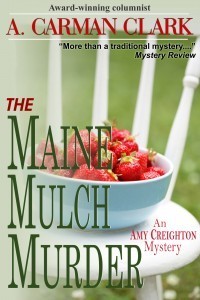 (At eighty-three, she published a mystery, The Maine Mulch Murder. She was working on a sequel at the time of her death.)
(At eighty-three, she published a mystery, The Maine Mulch Murder. She was working on a sequel at the time of her death.)
May 9, 2014
Special Report: Malice Domestic 2014
 Next week at Maine Crime Writers there will be posts by Kate Flora (Monday), Gerry Boyle (Tuesday), Kaitlyn Dunnett (Wednesday), Jayne Hitchcock (Thursday) and Vicki Doudera (Friday).
Next week at Maine Crime Writers there will be posts by Kate Flora (Monday), Gerry Boyle (Tuesday), Kaitlyn Dunnett (Wednesday), Jayne Hitchcock (Thursday) and Vicki Doudera (Friday).
But it’s last week we’re spotlighting in this post. Malice Domestic, as usual, was great fun, and here are some of the highlights, in prose and photograph, to prove it.
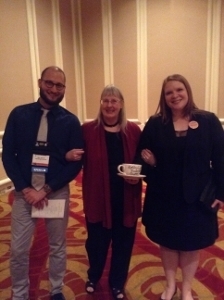
Guest of Honor Kathy Lynn Emerson (aka Kaitlyn Dunnett) with agent Christina Hogrebe and editor Peter Senftleben
Winners of the Agatha receive a teapot. Guests of Honor get a teacup that’s almost as big as an Agatha teapot.
Below is the view from above at one of the signings (the session Kate and Kathy/Kaitlyn were in).
Here’s the poster Kensington Publishing put up to announce there would be a signing and book giveaway, including titles by Kathy/Kaitlyn and Barb:
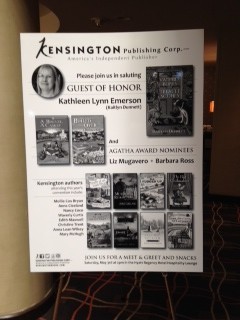
The Malice Poster
And here’s the panel on fan mail (always good for a few laughs), moderated by Verena Rose with panelists Dorothy Cannell, Martin Edwards, Kathy Lynn Emerson, Margaret Maron, Earlene Fowler, and Joan Hess.

Barb Ross and Kathy Lynn Emerson at the Malice banquet
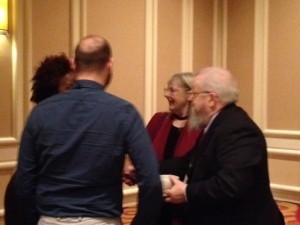
Kathy Lynn and the rarely seen Sandy Emerson after the banquet
Any more memories anyone?
May 8, 2014
Dorothy’s Weekend Away
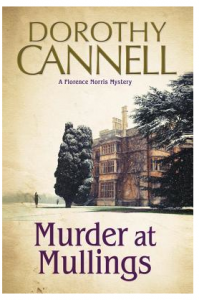 Dorothy Cannell here: Arrived back home Monday evening after a fabulous long weekend at Malice Domestic 26, in Bethesda Maryland. We have a very dear friend, Barbara, visiting us. She usually comes out from England for a couple of weeks each year, but chose early May this time in order to attend the event with us. We drove instead of flying, or I should say Julian drove. He isn’t keen on sharing this chore with me because my top speed is thirty miles an hour, and I grudgingly see his point. Having left home at 4 a.m. Thursday we should have arrived around 5 p.m., but the final six miles on the beltway took an hour and a quarter reminding us that Maine may have long winters, but does not have Traffic; at least not in our neck of the woods.
Dorothy Cannell here: Arrived back home Monday evening after a fabulous long weekend at Malice Domestic 26, in Bethesda Maryland. We have a very dear friend, Barbara, visiting us. She usually comes out from England for a couple of weeks each year, but chose early May this time in order to attend the event with us. We drove instead of flying, or I should say Julian drove. He isn’t keen on sharing this chore with me because my top speed is thirty miles an hour, and I grudgingly see his point. Having left home at 4 a.m. Thursday we should have arrived around 5 p.m., but the final six miles on the beltway took an hour and a quarter reminding us that Maine may have long winters, but does not have Traffic; at least not in our neck of the woods.
Malice Domestic is an annual mystery convention started by Elizabeth Peters and a group of enthusiasts to honor the traditional mystery. She had contacted me after my first book The Thin Woman was published and we became very close in the following years. Sadly, as many of you may know, she died last year. There was a huge sense of loss amongst all her friends, but the remembering was wonderful and we had a get-together with a round of toasts to her memory.
Kathy Lynn Emerson was this year’s guest of honor. For all of us who love her books, the honor was well and truly deserved. I felt very privileged to have received, along with Margaret Maron and Joan Hess, the Malice Lifetime Achievement award. It truly was a fairy tale week-end. One for the memory books. I may be prejudiced but I think people who love books are the nicest in the world.
Returning home might have felt a bit of a letdown, but our friend Barbara will be with us for another 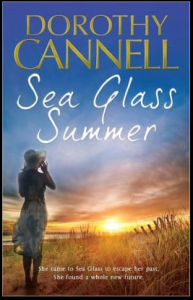 week. Yesterday I collected new addition to the family – a half Siamese, half Himalayan kitten. May have much more to report on him later. Our other cat made a token protest (some muttering about running away from home) but has decided to treat newcomer with dignified distain. Dog Teddy is beside himself with joy and kitty (Simeon) has made it clear he wants to be pals. Husband, Julian, reacted at first as if I’d given birth to another man’s child. (Would be miracle equivalent to Abraham’s Sarah.) But he is now considering whether Simeon should be raised Episcopalian or Jewish.
week. Yesterday I collected new addition to the family – a half Siamese, half Himalayan kitten. May have much more to report on him later. Our other cat made a token protest (some muttering about running away from home) but has decided to treat newcomer with dignified distain. Dog Teddy is beside himself with joy and kitty (Simeon) has made it clear he wants to be pals. Husband, Julian, reacted at first as if I’d given birth to another man’s child. (Would be miracle equivalent to Abraham’s Sarah.) But he is now considering whether Simeon should be raised Episcopalian or Jewish.
My latest book Murder at Mullings has just been released by Severn House, and Sea Glass Summer is now available as trade paperback or as e-book.
Happy spring! And most of all – happy reading.
May 7, 2014
The Tongue Stud Epiphany
John Clark here. I bet many of you read at least part of Carlos Castenada’s books about Don Juan the Yaqui sorcerer. One of the things I remember most vividly is the idea that there are places of power in the world. As a writer, I’ve discovered places where my creativity is much stronger. When I was the library director in Boothbay Harbor and I got stuck on a plot element in The Wizard of Simonton Pond, all it took was driving past Edgecomb Pottery and something to advance the story popped into my head. Our back yard has similar magic. I have written dozens of newspaper columns while pruning, raking, mowing or weeding the garden. Despite living in town, the back part of our property has woods on one side, a little wetland on the other and an abandoned railroad bed with a couple miles of fields and woods beyond it. All this makes it feel completely un-townlike.
Neither of these places of power are as productive as the spot in front of our kitchen sink. I find that the act of washing dishes frees my mind as I’m gazing into the back yard. In mid March, I was waiting for the coffee to brew while staring at three feet of snow when what I’ve come to call God’s Pinball Machine fired up. Here’s what followed and I share it because I think it’s useful to learn how other writer’s minds work.
I started wondering why people like one of my volunteers have tongue studs. The whole idea of a piece of metal in a hole through your tongue, particularly in view of how irritating the post and backing underneath must be, makes no sense to me. It was at that point when the uncensored writer kicked in and I started imagining the erotic possibilities inherent in having one. Don’t know, haven’t asked, but the thought was there and quickly bounced off a bumper and hit another one.
I started thinking about the number of similar themes in YA fiction I’ve encountered this year. Take leukemia for example. I’ve read five books already where one of the main characters has this illness. Some die, some live, all are different, most are good reads.
That got me thinking about what aspect of illness hasn’t been part of a YA plot yet. Laurie Halse Anderson owns PTSD this year thanks to The Impossible Knife of Memory, but what aspects of mental illness haven’t had their day and what plot twist hasn’t been used yet?
By the time I could pour that first cup of coffee, the snow on the back lawn was covered with imaginary plot elements and character sketches. My next project, the juvenile mystery I’m calling Shear Pin Summer, got kicked aside by a new YA contemporary I’m calling Finding Ginger.
Here’s what was written out there in the snow. Suppose you were fourteen and living with your parents in Baltimore, Maryland. You attend a private school, your parents are well educated government employees and you’re an only child. Your life has been unremarkable, you get along with your parents and you love reading and writing poetry. One night you wake up in the grip of utter terror, convinced the devil is coming up from hell through a tunnel which opens under your bed and he’s about to drag you back with him. You have never had anything this horrific happen and it seems so real, you react by jumping out of bed and smashing your head into the full length mirror on your bedroom wall. You’re in a dazed state when a voice starts commanding you to grab a shard of glass and start cutting yourself so the devil will see blood and retreat. When your parents find you, you’re lying on the floor, bleeding from numerous self-inflicted slashes across your abdomen.
You have just met Twyla, who has had her first psychotic break and will be diagnosed as having bipolar disorder. Unlike many who have this illness, she tends to cycle into severe depression instead of mania. When she gets out of the hospital, her life is irrevocably changed. Her classmates are leery of her, her parents are scared at what might happen in the future and she’s realized that she can’t stay on the medications prescribed as part of her treatment because they kill her soul. At fourteen, this is a pretty bleak future, but it gets even bleaker. Over the next three years, she’s hospitalized three more times, is assaulted by two street people, kills someone and is so depressed at one point that she receives ECT. School is no longer an option and the only place she feels anywhere close to normal is when she’s working under the table at a job in a pawn shop run by a a recovering addict biker babe who escaped her own hellish existence in California.
When Twyla realizes that her parents are never going to understand how awful she feels when on prescribed medication, she steals her mother’s ATM card, withdraws $600 and buys three bus tickets to different locations, using the card to confuse anyone trying to track her and giving tow of the tickets to girls about her age to further confuse anyone looking for her.
Twyla ends up in Boston, doing the live in shelters and work for cash when you can routine. She knows it’s just a matter of time before she cycles again. This time, she uses crack, alcohol and various pills bought on the street to help her survive. When she stabilizes, she’s broke and has done things she’s not proud of, but has survived on her own terms. Boston’s too big and scary for her, so she finds enough cash to go on another bus ride. When she arrives at the bus terminal, she’s trying to decide between going to Burlington, VT., or Bangor, Maine. She’s leaning toward Burlington and even gets in line to buy a ticket, but when the couple in front of her starts fighting and the guy hits his girlfriend, that sends her to the Bangor ticket window and she ends up on the streets of Bangor in early November.
Her trials have taught Twyla to be a survivor, but in many ways she’s still that frightened fourteen year old kid. She’s never been kissed voluntarily, never had a boyfriend, never even been on a real date. After she discovers a loose panel on the Salvation Army donation bin, she makes it into her home, saving various items in a couple trash bags which she hides in a snowbank when she’s out and about. This ensures that she always has clothing and bedding in case she returns and the bin has been emptied.
Twyla survives on the coins people lose in the Bangor Mall parking lot, the returnables she retrieves from snow banks and trash cans, as well as on the two or three free meals available to the homeless every week. When she arrived in Bangor, she remembered something her biker babe friend got her involved with back in Baltimore and starts going to AA meetings. She knows that the next time she cycles, she’ll use again, but in the interim, she likes the feeling of hope and safety she finds at meetings, makes a couple friends with women who have similar stories and knows the free coffee isn’t bad either.
There’s a stretch of pretty severe weather at the end of February that makes finding coins and returnables almost impossible, so Twyla stifles her pride and starts dumpster diving behind the mall food court. She soon discovers that the one shared by the KFC franchise and a Chinese fast food place is the best bet, but it almost seems like someone’s leaving untouched and freshly cooked food at the top of a KFC trash bag every night.
She’s eating a chicken wing while crouched beside the dumpster one evening when she hears a door slam and realizes someone is approaching her with a garbage bag in one hand. She doesn’t have time to escape, so she pulls out her switchblade and flicks it open. The young man who looks about her age freezes, but doesn’t look scared. Instead, when she looks at his eyes, something deliciously frightening hits her and she lets the knife fall to her side when she realizes two things. This is the person who has been feeding her and she hasn’t ever felt a pull like the one between them.
You have just met Abel, who is also nineteen. He grew up in Greenbush and is an only child whose parents had to get married when his mom got pregnant at sixteen. He was born with a defective eye, but because his parents had no health insurance, it was never treated properly. He lost it when he was five and started kindergarten with an eye patch over the empty socket. The class bully hauled him down on the first day, ripping off his patch so everyone could see the sagging lid over an empty socket. That set the tone for his entire school life. Abel never had a girlfriend, or even any close friends for that matter. When he did get an artificial eye six months after losing his, it was a donation from someone in Boston through the local Lion’s Club and was just enough off in color to call even more attention to his face.
Abel could have turned out to be a very bitter person, but went in the opposite direction. He’s amazingly compassionate for his age, something that Twyla picks up on immediately. After he graduated from high school, he moved to Bangor because he needed to feel independent and he’s used the library there ever since he burned through everything at the little library in his home town.
He works the late shift at KFC and gets around Bangor on a second hand bike. He has a good friend and mentor, Josh, who is a librarian at Bangor Public. Josh is ten years older and came from Greenbush. He saw the hidden talent in Abel and got him hooked on reading science fiction and fantasy as well as reviewing books for the library website. When he encouraged Abel to submit some of his short stories to a local contest, Abel won and this started him thinking about writing as a career.
All that was written out there in the snow back in March. It has since taken over almost every bit of my free time and the story now stands at 78,000 words. It’s a very edgy, but at times sweet love story about two young people who have become survivors after getting kicked in the teeth by life. I know how it ends, but there are still some events I’m not clear on. That’s fine because every so often Twyla and Abel grab me by the arms and hustle me off to that magic place where characters start dictating unexpected events to the author. There’s no better time in a writer’s life than those moments. Stay tuned to see what happens.
Lea Wait's Blog
- Lea Wait's profile
- 508 followers


